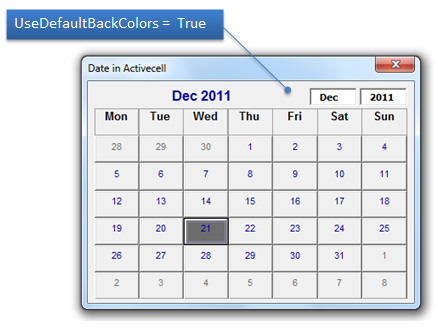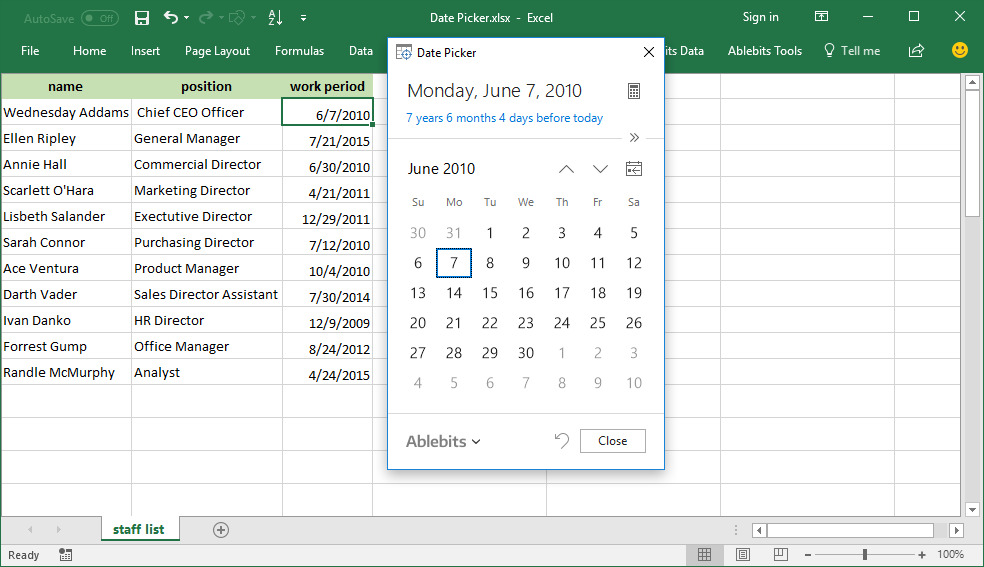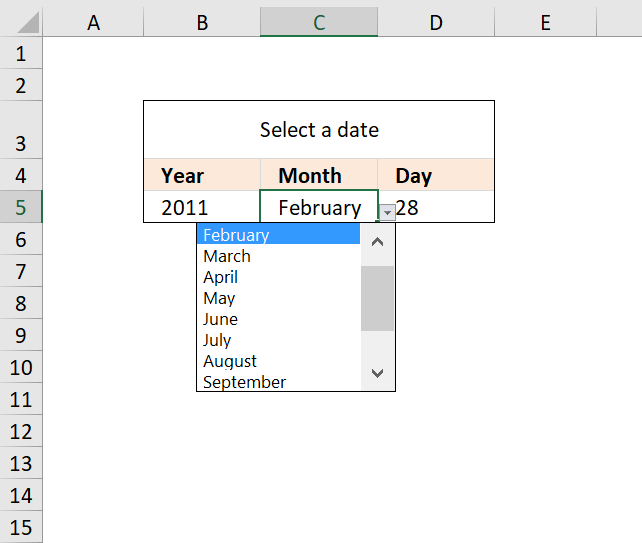- How Do I Insert A Calendar Drop Down In Excel Mac
- Drop Down Calendar In Excel 2011 Online
- Drop Down Calendar In Excel 2016
'Create a calendar drop down box' wrote in message news:D6CE2183-A75D-4A17-8A83-F0EC4C1A2995@microsoft.com. I would be interested in your way of creating this.
- Enter the list of values for your drop-down in a column. Make sure to enter each drop-down entry in a separate, consecutive cell in the same column. For example, if you want your drop-down list to include 'New York,' 'Boston,' and 'Los Angeles,' you can type 'New York' in cell A1, 'Boston' in cell A2, and 'Los Angeles' in cell A3.
- Excel Drop Down Date Example (12k) And Tim, You any any other reader can always send the beer to me by clicking beer mug at the top of the page. Categories Uncategorized. Tags Calendar Date Drop Down Excel Pull Down.
Note
Office 365 ProPlus is being renamed to Microsoft 365 Apps for enterprise. For more information about this change, read this blog post.
Summary
This article contains a sample Microsoft Visual Basic for Applications macro (sub-procedure) that prompts you for the month and year and creates a monthly calendar by using a worksheet.
Resolution
Note

Microsoft provides programming examples for illustration only, without warranty either expressed or implied. This includes, but is not limited to, the implied warranties of merchantability or fitness for a particular purpose. This article assumes that you are familiar with the programming language that is being demonstrated and with the tools that are used to create and to debug procedures. Microsoft support engineers can help explain the functionality of a particular procedure, but they will not modify these examples to provide added functionality or construct procedures to meet your specific requirements.
To create the calendar, follow these steps.
Microsoft Excel 2003
- Create a workbook.
- On the Tools menu, point to Macro, and then select Visual Basic Editor.
- On the Insert menu, select Module.
- Paste the Visual Basic for Applications script from the 'Sample Visual Basic procedure' section into the module sheet.
- On the File menu, select Close and Return to Microsoft Excel.
- Select the Sheet1 tab.
- On the Tools menu, point to Macro, and then select Macros.
- Select CalendarMaker, and then select Run to create the calendar.

Microsoft Excel 2007 or later
- Create a workbook.
- On the Developer ribbon, select Visual Basic.
- On the *Insert menu, select Module.
- Paste the Visual Basic for Applications script from the 'Sample Visual Basic procedure' section into the module sheet.
- On the File menu, select Close and Return to Microsoft Excel.
- Select the Sheet1 tab.
- On the *Developer ribbon, click Macros.
- Select CalendarMaker, and then select *Run to create the calendar.
Note
If the Developer ribbon is not visible, open Excel Options to enable it. In Excel 2007, the option is available on the Popular menu. In Excel 2010, the option is available on the Customize Ribbon menu.
Sample Visual Basic procedure
How Do I Insert A Calendar Drop Down In Excel Mac
You can add other code to customize the calendar to meet your needs. Insert extra rows for entry on the screen for each day or resize the screen to see the whole calendar based on screen size and resolution.
 1. Make sure the Developer tab is showing in the ribbon (the toolbar at the top of the page). If it isn't, then click the 'Office' button at the top left, then choose 'Excel Options'. This will bring up a pop up window. Put a check mark in the 'Show Developer Tab in the Ribbon' option, then click 'OK'.
1. Make sure the Developer tab is showing in the ribbon (the toolbar at the top of the page). If it isn't, then click the 'Office' button at the top left, then choose 'Excel Options'. This will bring up a pop up window. Put a check mark in the 'Show Developer Tab in the Ribbon' option, then click 'OK'.
2. Click on the 'Developer' tab. Click on the small arrow below the 'Insert' tab and choose 'ActiveX Controls'. Click the last icon in the list ('More controls').
Drop Down Calendar In Excel 2011 Online
3. Choose 'Calendar Control' and press 'OK'.
4. Click on a cell in your worksheet where you would like to place the calendar. Click the 'Design Mode' button to turn off design mode and return to normal operation.